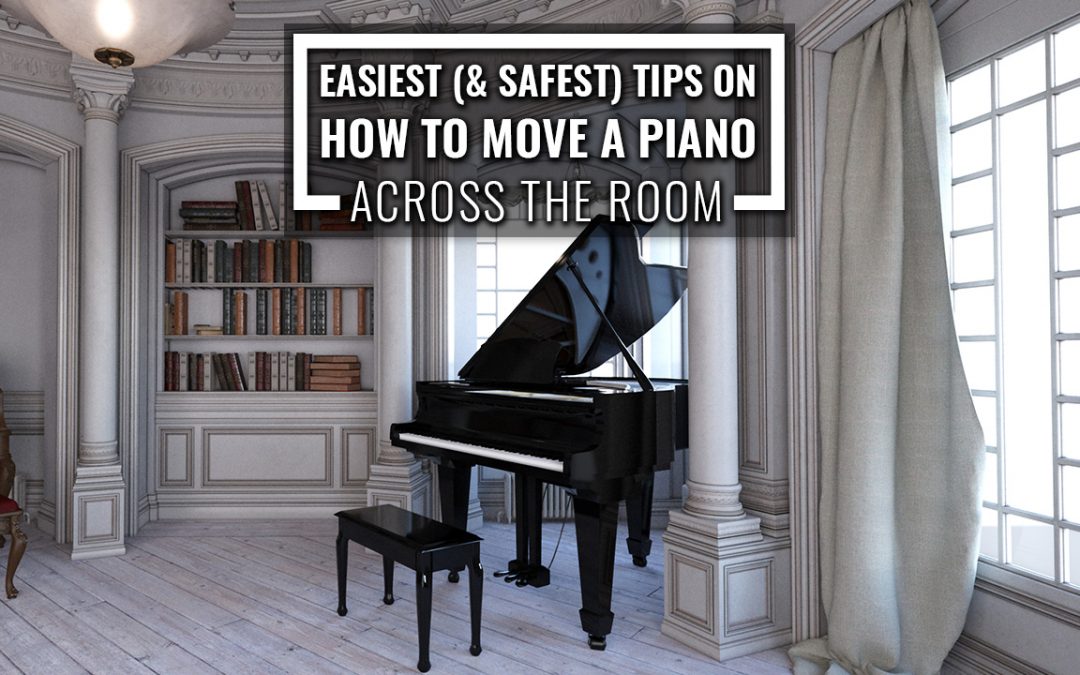At one point or another, we all get the itch to spruce up our homes. Rearranging the furniture can completely change the feel of your house, and piano placement in a room is especially crucial. Inspiration is the easy part –moving an entire piano, however, can be tricky.
Moving a piano is not only risky for the piano, but can also be dangerous for yourself. You’ll want to hire a piano moving professional if you’re moving your piano between different floors or very tight spaces. But if your new location is only a few feet or a room away, check out this advice on how to move a piano across the room:
1. Prepare Your Piano and Path
The very first step in how to move a piano across the room is to prep both your instrument and also the room it will be moved into. Clear off everything on top of your piano. If it has a lid, make sure that it is closed –this is especially important for your precious fingertips once the piano is in motion!
You’ll then want to clear the path in which your piano will travel. Make sure there aren’t rugs or pieces of furniture in the way of your destination. It’s also crucial to measure every doorway or space you’ll need to travel through. Don’t put yourself in a position where you’ll need to improvise your next move.
If you are dealing with a grand piano and are only moving it across the room, most likely you will be able to use the wheels to get it where you want. In contrast to hardwood floors, carpet will require more force to get your piano moving. If your grand piano doesn’t have wheels, it’s typically easiest to remove the legs and then maneuver it to its new place.
Upright pianos are easier to handle than grand pianos mainly due to their size and the way they can be moved. Still be cautious about maneuvering, however, as upright pianos are top heavy and are more prone to falling sideways.

2. Gather Piano Moving Tools & Supplies
A dolly will make moving your piano far easier and safer. This is especially true with grand pianos that do not have wheels. You’ll still want to have a few people to support the sides of the piano as it travels on the dolly.
Depending on how complicated your move is, you might also want to have moving pads and straps available. If you’re moving a piano on its side, make sure to strap down the lid. Falling lids often damage the piano and can even hurt whoever is nearby. Moving pads/blankets will also help prevent any other object in your house, like walls or furniture, from doing any exterior damage to your piano. Trust us: it is better to be over-prepared than underprepared and damaging your piano, house, or even yourself.
Let Professional Movers Help
You know your home best, which also means you best know what kind of move you can or can’t handle. We hope this guide on how to move a piano across the room was helpful. But remember: when in doubt, call a professional piano mover for a consultation. And if you’re in the Portland area, don’t hesitate to contact West Coast Piano Movers for any local piano moving services.


This is a great post! Many people who need to move a piano feel that it is a difficult job. The good news is that moving a piano can be easier if we follow a proper process. Thanks for sharing these useful tips.
I would like to move my Young Chang baby grand to another room. I recall a swivil type feature where the piano became vertical and was easily moved when brought into our home a dozen years ago. Wondering if I was mistaken or if this is true? Thanks!
Good question, Mary Sue! We don’t have a swivel feature. What we do is come into the customers home and remove 1 leg and 2-3 guys lift the piano up on its side manually, and then remove the rest of the legs. We then move the piano to the desired spot and then do the reverse. We put the 2 legs on, tilt the piano back up, 1 guy holds the piano while the other guy places the leg and then they are good to go.
Feel free to reach out with any more questions!
Piano is very heavy stuff. Not possible to move yourself. Piano Moving requires an Expert. Professional Movers knows how to move the piano. They move with caution while moving. Thanks a lot for this beauty Enjoying article with me. I appreciate it very much!